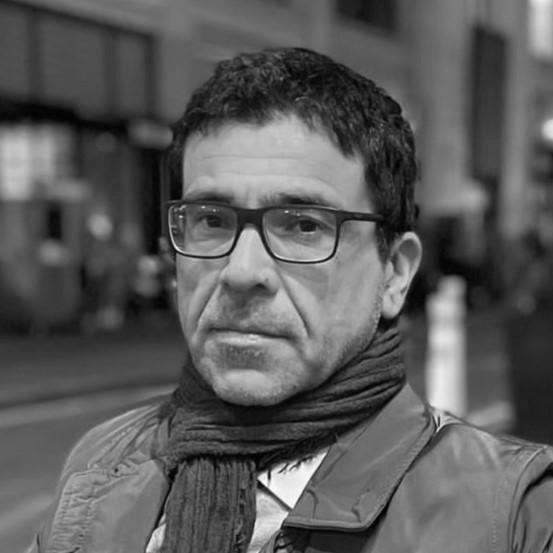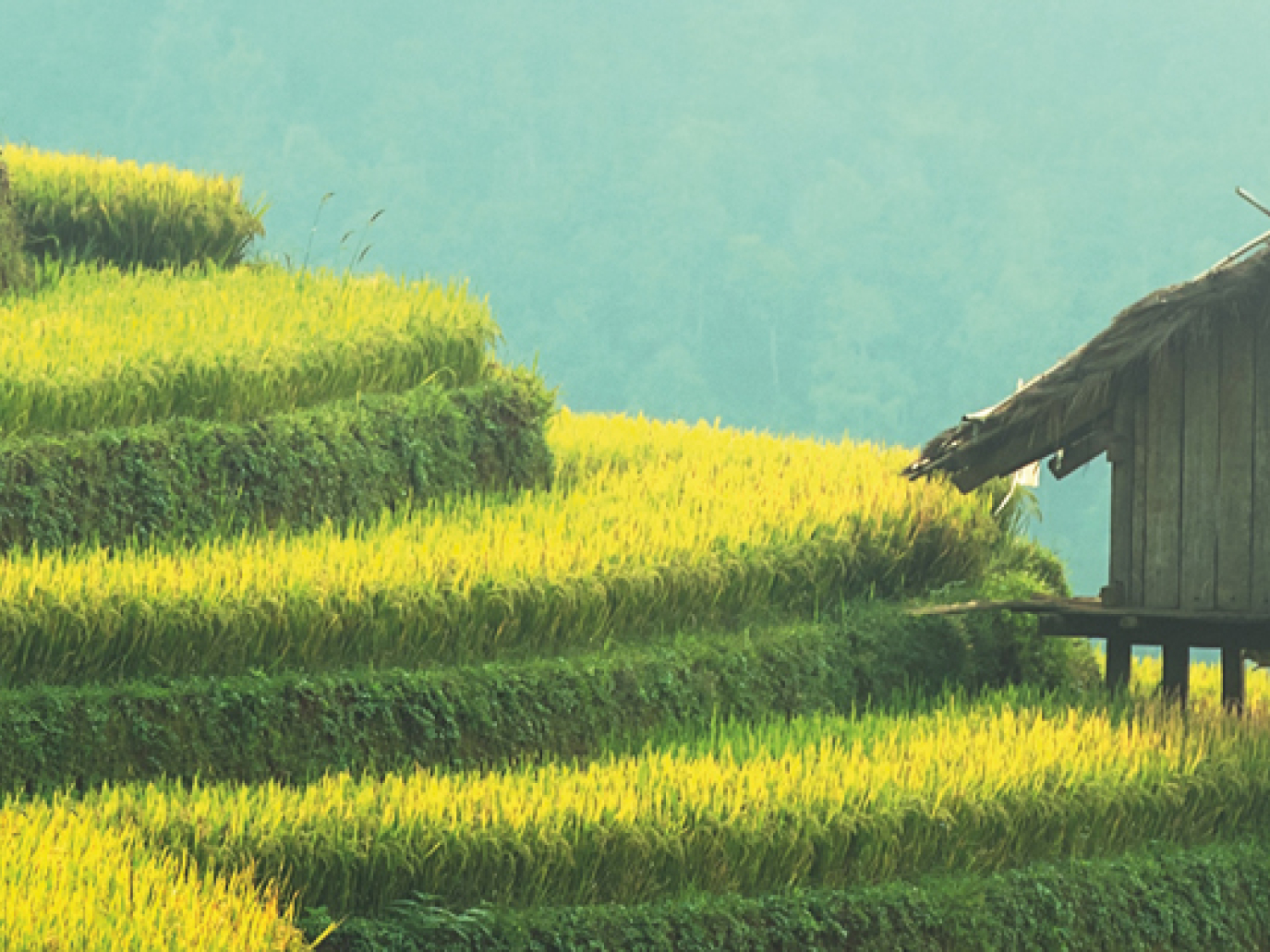Abundant natural resources, highly skilled workforce, important petrochemical industry and a government that sustains the decarbonisation process with conviction and a plan to increase the bioeconomy’s contribution to the country’s GDP from a predicted 2% in 2022 to 37% by 2037. These are, in brief, the factors contributing to a promising outlook for the bioeconomy in Thailand, a country that is home to between 8 and 10% of the world’s microorganic species, and about 8% of plants. Thailand produces 50% of the world’s manioc, 9.4% of its sugar and 24.9% of rice, all of which gets exported on a global scale.
This wealth of natural resources, combined with strong support from government institutions (National Biotechnology Framework in 2004, National Bioplastic Roadmap in 2008, Alternative Energy Development Plan in 2012, Thailand 4.0 and the New S-Curve in 2015), is allowing for strong development of biobased production and attracting significant investments from foreign multinationals, for example with the Total Corbion PLA joint venture, through which the French oil giant and the Dutch biochemical company are focusing on the production of PLA (polylactic acid) bioplastics. Human capital in Thailand is also becoming more and more suited to the concerns of the bioeconomy: in 2017, according to the Office of Higher Education Commission, there were over 34,000 degrees awarded in the sciences, and over 40,000 in engineering subjects. Furthermore, universities are offering numerous study programmes that are focused on the bioeconomy, such as the Bioinnovation degree course launched at Mahidol University.
The bioeconomy is also the protagonist of several short, medium and long-term programmes by businesses in sectors seen as key within the Thailand 4.0 economic development plan. In discussions about agriculture, biotechnologies and nutrition for the future, the bioeconomy is present, just like it is in longer-term discussions regarding biofuels and chemical products with biological origins. All in all, an economy based on renewable biological resources is seen as a strategic area that will enhance industrial development in Thailand in the third millennium.
Bioplastic in Pole Position
One of the feathers in the cap of the Thai bioeconomy is the production of bioplastics. Sugarcane, converted to PLA and then used to produce bioplastics, can increase its value sevenfold, according to the Bangkok government’s estimates. The abundance of raw materials and the presence of a strong petrochemical industry, with approximately three thousand companies active in the plastics sector, has enhanced the production of bioplastics, 90% of which is destined for export.
In 2006, the national government declared the bioplastics industry as one of the “new wave industries” considered primarily important for the country’s growth. Seen as an emerging industry, its potential is enormous, thanks to the presence of natural resources (manioc above all) that are low-cost and readily available, as well as to a network of plastic-producing companies with consolidated channels for distributing the finished product globally. Thailand is the largest exporter of plastic in Southeast Asia, and ranks eighth in the world.
The roadmap for bioplastics fostered integration and a tighter collaboration between the government, the private sector and the research community, and has led to the creation of a series of programmes of support, incentives and infrastructure to encourage innovation and commercialisation, with the ultimate goal of creating a sustainable bioplastics industry in Thailand that is able to compete on an international scale. Within this framework, 89 research and development projects have received financing, an industrial association for the sector has been established, standards have been set for biodegradable and compostable bioplastics, cooperation with other industrial associations in Europe, Japan, South Korea and Taiwan has been strengthened, and an international conference, InnoBioplast, has been organised.
Market Players
Some of the major players in this market are based in Thailand, or at least have one of their headquarters there. Multibax is one of the most renowned national companies in the sector. Its flagship product is Mbio-2, a biodegradable plastic bag that has been certified by the main certification bodies worldwide. PTT MCC Biotech is a joint venture uniting the Thai chemical colossus PTT Global Chemical and Japan’s Mitsubishi Chemical, which has developed a biobased polybutylene succinate (bio-PBS), whose main application is in compostable bioplastic derived from maize, manioc and sugarcane.
NatureWorks is also a joint venture involving PTT Global, this time alongside US company Cargill. A leader in the bioplastics market, this Minnesota-based company has one of its offices near Bangkok.
Finally, Total Corbion PLA is already a consolidated presence in the Thai territory. The first initiative came from Corbion, which has been active in Thailand since 2005, producing lactic acid which is used to make bioplastic (PLA) from sugar. Last December, the French-Dutch multinational celebrated the launch of its 75,000-tonnes-per-year bioplastic PLA plant, near Rayong, in the East of Thailand. The new structure will produce a wide range of Luminy PLA resins derived from non-GMO, locally sourced and renewable sugar: all the way from standard PLA to innovative, heat-resistant PLA.
Biofuels
Thailand is also one of the main players when it comes to the Southeast-Asian bioethanol market. In 2018, production reached 1.5 billion litres, a threefold increase in value compared to just ten years earlier. And the goal set out in the Alternative Energy Development Plan expect that output will reach 3 billion litres by 2026. According to the same plan, by 2036 renewable energies should account for 30% of the total, with a substantial growth for biofuels – from 7 to 25%. The Thai government is confident that the market will grow, and stated a goal for bioethanol consumption to increase from 1.18 billion litres to 4.1 billion litres by 2036, and for biodiesel consumption from 1.24 billion to 5.1 billion by the same date. All of this involves a series of fiscal incentives and subsidies that support an increase in the number of vehicles that can be powered by E20 and E85 fuel mixtures. Sugarcane and manioc are once again the primary raw materials, with sugarcane dominating the market – amounting to 70% of bioethanol production – because of its low processing costs.
Among the main players in the market is Global Green Chemicals, formerly known as Thai Oleochemicals Company, a leader in the production of methyl ester, a key ingredient in biodiesel. Alongside it can be found the Bangchak Corporation Public Company, which has ventured into the bioenergy sector with three different companies: Bangchak Biofuel, Bangchak Bioethanol and Ubon Bio Ethanol. Thailand is third in the world for production of palm oil, therefore much of the country’s biodiesel is derived from this raw material.
Attracting Investments
The Thai market is very interesting in terms of bioeconomy. The financial support coming from the government has helped in this regard. In 2017, with the aim of attracting foreign investment, the Bioeconomy Scheme was launched: 400 billion Thai baht (equivalent to 11.7 billion euro) to aid the bioeconomy, in three phases. The first, with 51 billion between 2017 and 2018, the second in 2019-2020 with 182 billion, and the third from 2021 to 2026 with 132 billion. Furthermore, at the beginning of this year a development plan for the bioeconomy was presented, led by the Board of Investments, a government agency under the direct control of the Prime Minister’s office.
“Green is the way to go for investors in Thailand”, declared Deputy Prime Minister Somkid Jatusripitak on March 4th upon announcing the Thai plan for the bioeconomy, with the new generous incentive scheme for investors interested in building the Kingdom’s new economy, financing research, development and innovation. According to the politician, a growing and lucrative bioeconomy serves the double purpose of reducing income inequality among farmers whilst at the same time creating higher-value products, thanks to a collaboration between science, agriculture and industry.
“The package to promote Thailand as a bio-economy hub not only gives large companies an opportunity, but also supports community businesses and agricultural cooperatives”, Somkid added.
The plan set forth by the Thailand Board of Investment (BoI) guarantees eight years of corporate-tax exemption for investors and additional fiscal privileges after this period (depending on the investments made), as well as assistance measures for farmers. According to the BoI, this incentive scheme may foster the development of several clusters across the territory, focused on fruit waste in the Northern provinces, on sugarcane and tapioca in the Northwest and on palm in the Southern provinces.
The bioeconomy development plan is based on five pillars: bioenergy, biochemistry, food, animal feed and biopharmaceuticals. The latter is seen as an integral part of the Thai bioeconomy, in line with the Anglo-Saxon model (the US and the UK both refer explicitly to biopharma in their national strategies for bioeconomy).
“The key challenge for reforming Thailand’s economic structure is that we have been functioning as a low-value driven economy for so long, producing and exporting only raw materials for other countries to transform and thus losing the chance to generate added value,” the Deputy Prime Minister stated when presenting the plan.
The Role of the BIOTEC Research Centre
Underpinning the development of the bioeconomy in Thailand is the founding, in 1983, of the National Centre for Genetic Engineering and Biotechnology (BIOTEC), which, starting in 1991, became one of the outstanding research centres at the National Science and Technology Development Agency (NSTDA) with a specific focus on technology transfer.
BIOTEC is a primary research centre across all of Asia, managing research units across the Thailand Science Park, as well as specialised laboratories hosted by different universities, giving work to over 500 people, including 170 research fellows and 200 lab technicians and research assistants. Research activity covers a wide area: from agrarian science to biomedical and environmental sciences. In addition to research laboratories, BIOTEC’s activities include an awareness campaign, education and international relations. The Centre is financed by government funds and private foundations, but also by income derived from the services it provides.
Its technology transfer activities are top-level, involving public and private companies – especially in rural communities – and accompanied by continuous efforts to educate workers in the field of biotechnology.
Industrial biotechnologies are the real engine of the \"Made in Thailand\" bioeconomy.
National Center for Genetic Engineering and Biotechnology, www.biotec.or.th/en/index.php

Interview with Mariagiovanna Vetere, Global Public Affairs Manager for NatureWorks.
by M. B.
The Bioeconomy in Thailand is Rapidly Expanding
A fifty-fifty joint venture between US food giant Cargill and Thailand’s PTT Global Chemical, NatureWorks is a global leader in the bioplastics market. In this interview with Renewable Matter, Mariagiovanna Vetere, NatureWorks’ Global Public Affairs Manager explains what it means to invest in the bioeconomy in Thailand, and what the country’s strengths and weaknesses are.
Half of NatureWorks, as a venture, is Thai. What are the strong suits of the bioeconomy in Thailand?
“The bioeconomy in Thailand has as its starting point an abundance of natural resources and biodiversity to be found on its territory: 8% of the world’s microorganisms and 10% of plant species are to be found there. Today, on a global level, Thailand produces approximately 50% of cassava, 9.4% of sugar and 25% of rice (source: World’s Top Exports, KrungsriResearch 2017). This abundance is undoubtedly an asset, especially when paired with a clear development policy that believes in the bioeconomy, both in terms of finance and of cultural development, and demonstrated by the government’s support for many higher education programmes for the education of experts in chemistry, bioengineering and biotechnology.”
And its weaknesses?
“The bioeconomy is booming, both in terms of materials (biopolymers, green chemistry) and biofuels. I think the biggest challenge the country will have to face relates to the sustainability of the biomasses being used. NatureWorks is committed to certifying all the biomass used at its plants – now and in the future – to guarantee that the development of the bioeconomy proceeds at the same rate as sustainable agriculture and the protection of soil, water and biodiversity.”
Thailand is showing a lot of support for the bioplastics sector. What does this mean, concretely, for you? And what are the main differences with the US and Europe?
“The Thai government is investing more than Europe and more than the US, and has set out an extremely competitive support plan for foreign investors. One need only think of the corporate-tax exemptions for up to 15 years, and the deductibility of Research and Development expenses. For NatureWorks this represents a very appealing package that will aid the construction of a second – maybe even a third – plant for the production of our Ingeo polymer.”
Is there a good level of awareness among the Thai public when it comes to “green” matters?
“The Thai population is becoming ever more aware of the problems that are tied to climate change, in particular following the floods that regularly afflict this tropical nation. The issue of atmospheric pollution is also very strongly felt, given the rise of PM2.5 levels tied to forest fires in neighbouring countries and the increase in road traffic.”
How important is palm oil for the Thai bioeconomy?
“I’m not an expert on the matter, but I know that palm oil is used within the field of green chemistry to create numerous products. Thailand is an important producer of palm oil and here too sustainability plays an important role in preserving the great biodiversity of Thailand’s forests.”
What are NatureWorks’ development plans in Southeast Asia?
“So far, there are no detailed plans: we’re actually exploring the possibility of building one of our next plants in Thailand, but there are still no certainties on this matter.”
NatureWorks, www.natureworksllc.com



